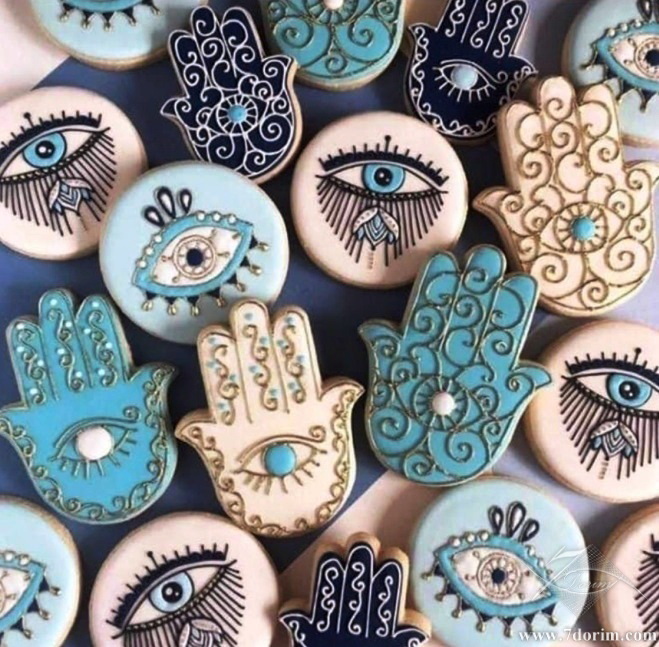
In ancient Egypt, the title “Horus” was used for several Pharaohs and gods, the most famous of which was Horus son of Isis. After his father’s death, Horus fought his uncle, Seth, and ascended the throne. He lost his eyes during that battle, which was later restored with the help of a god called Toth. This is how Horus’ eye became a symbol of repelling catastrophe and sickness, while also being a spell against devils and dangers, making it one of the most important symbols of ancient Egypt and earning it the names “eagle-like god” and “the eagle Horus”. The symbol of an eagle was considered one of the prominent characteristics a god could have and was depicted as an eagle sitting on a branch, watching the world.
The eye known as the “Eye of Horus” or “the Egyptian eye,” is referred to as the “Eye of Providence”. In many surviving depictions from ancient Egypt, it is a combination of a human eye and a falcon. The darkened eyebrow and the cheek of this bird resemble the head of an eagle. In Egyptian pronunciation, it is called “Hor,” meaning the sky. In the common belief of ancient Egyptians, the “sky” was perceived as a divine eagle soaring above them, and the sun and the moon were the two eyes of this mythical eagle. This belief was so widely promoted that Egyptians depicted its image on boats to safeguard themselves from the dangers of the sea during storms. The inscriptions on the pyramids state that Horus, the divine deity, was considered among the pharaohs, and they called him “Horus the Destroyer” and also “the God of Revenge”. Over time, paintings in the temples of the pharaohs and discovered statues showed that most of them had a symbol of an eagle’s head in common. Even a pair of eyes, a combination of a human eye and a falcon, along with depictions of the bird’s darkened eyebrows, were painted on coffins. It was believed that the deceased could also see, symbolizing a form of divine supervision and control. Therefore, possessing this symbol was considered a representation of power and control for the pharaohs.
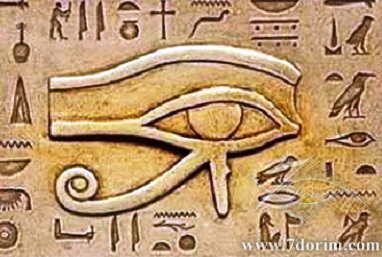
The Eye of Providence existed among other cultures too, but in a different form. For example, in the third century B.C, Sumerians portrayed their special statues with unnaturally big eyes to imply that they are the always watching, emphasizing on the sacredness. They held ceremonies where artists would open the eyes of the statues, making it seem like they are alive. In ancient Greece, to bring another example, Apollo was the god of light, illumination, and the embodiment of the power of the sun and moon. Similar to Egyptian gods, Apollo was one of the most important of the 12 Olympian gods, highly revered and referred to as “the god Horus”. Apollo, besides being the god of the sun, was also known as the god of music. According to the narrative, playing the lyre brought joy to the Olympian gods.
As one of the major world religions with over 500 million followers, Buddhism uses the term “The All-Seeing Eye” to describe Buddha in many of its sacred texts. Siddhartha Gautama Buddha taught that Buddhism is comprised of three aspects, symbolized by the triple gem (“Triratna”), which include the Buddha, the Dharma (teachings), and the Sangha (community). Known as “Tiratna” or the Three Jewels, this triad represents threefold refuge. After reaching the state of enlightenment, practitioners aim to attain the threshold of “Nirvana,” which can be described as pure liberation and absolute tranquility.
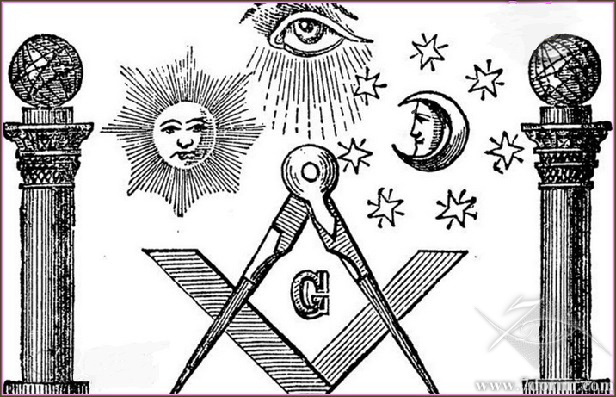
Among the surviving artworks in the iconography of the Middle Ages and the Renaissance, the Eye of Providence is often depicted alongside a triangle that surrounds it. This symbolizes an explicit representation of the Christian concept of the Trinity or the triune belief, one of the fundamental tenets of Christianity. According to this belief, the singular God exists in three personae: “God the Father, God the Son (manifested in Jesus Christ), and God the Holy Spirit.” These three share the same essence but are distinct from each other.
With the emergence of the Renaissance, the promotion of this religious belief by the Church increased significantly. From the early 14th century, for over four centuries, the Church held sway over European governments, intertwining them with its own doctrine and superstitions.
In the late 14th century, a group known as the “Freemasons” emerged in England, declaring their existence with principles of brotherhood and adherence to traditional customs. Initially, the Masons were a liberal movement, opposing the hierarchical Christian system, leading the Roman Catholic Church to label this group as a secular, heretical, and satanic movement.
Although the Eye of Providence was originally a significant symbol in Christianity, finding its earliest use in Renaissance art in an attempt to represent God, over time it transformed into a symbol of God’s vigilant supervision over Christian followers. As time passed, Freemasons adopted the Eye of Providence as a symbol of the Creator, deviating from some of the doctrines of the churches of that era.
Freemasonry often depicted rays as semicircles beneath the eye, symbolic of God’s manifestation. The eye may also appear in a triangle, similar to ancient civilizations. Another group called the “Illuminati” emerged later, associated with the Freemasons and founded in Bavaria, Germany. In alignment with the churches, they chose the Eye of Providence as a divine symbol for themselves and engaged in activities similar to the Masons.
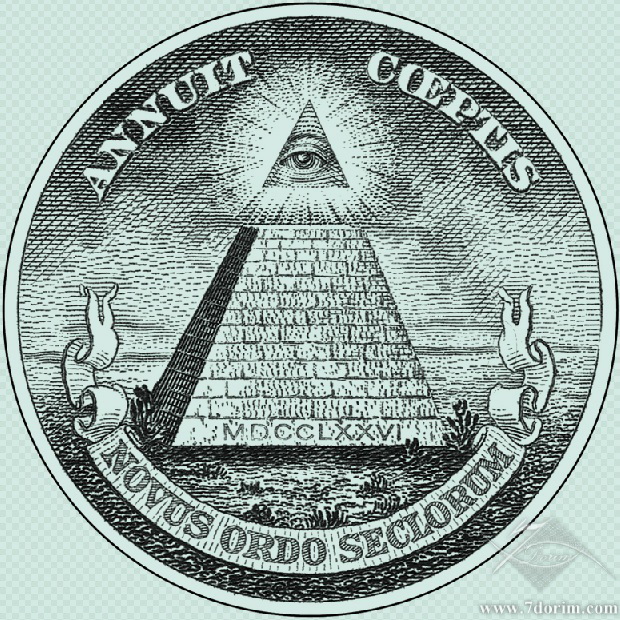
Today, Masons associate the “Eye of Providence” with their organization as a distinctive symbol. In 1797, this symbol officially became part of the iconography standards of Freemasonry in England for the first time and emerged around the world. In this group, the All-Seeing Eye is justified as the eye of Divine surveillance, always watching over humanity. It serves as a reminder of the belief that the thoughts and actions of a Mason are constantly under the supervision and control of the Creator. Notably, many Masons often refer to “Moses” as the great architect.
From the early 1780s, the All-Seeing Eye symbol (similar to the symbols of other European countries during the same period, namely England and France) was chosen as the Great Seal of the United States and officially recognized. In a way, this emblem was seen as an indicator of Masonic influence in the foundation of the United States and, on the other hand, as a representation of Britain’s power in its continuity. After a while, Congress presented an alternate design on the back of the one-dollar bill, which was the pyramid and the eye of providence. This became the most iconic representation of the All-Seeing Eye. In this interpretation, an incomplete pyramid was considered to symbolize power and the continuity of time, with 13 steps or layers representing the original 13 states of America, signifying the emergence of the United States as a unified country from several states. The All-Seeing Eye sits at the top of this incomplete pyramid, serving as a symbol of the Supreme Creator. The figure collectively represents the order of the modern world.
Nevertheless, many believe that this eye is in reality Lucifer’s eye, the devil, and the imagery traces back to “Horus” or the Eye of Providence. Those who possess the power to control it are believed to rule over the entire material world. Today, this symbol or sign forms the basis of the New World Order and is utilized in contemporary divinations. It also plays a role in magic, curses, spiritual controls, and all deviations influenced by the All-Seeing Eye.
Inspired by Zohar, unlike other ancient civilizations, Jewish cultures interprets the term “Eye of Providence” or “world-seeing eye” to mean the evil eye or the eye of Satan. Jewish scholars have even devised measures to counteract it. For this purpose, they resorted to creating segulah (amulets), khamsa, or anything that could ward off the evil eye. Particularly in the Mediterranean and Western Asia, the symbol of the hand with five fingers is commonly used as a tool for defense against the evil eye. According to one narrative, the five fingers represent the five senses (sight, smell, taste, hearing, and touch), and the khamsa, or palm, serves as a shield protecting these five senses against demonic temptations. This belief has appeared multiple times over the centuries in Jewish mystical literature and has widely spread among many Mediterranean and Asian cultures, later expanding to Europe and America.
Jewish mysticism, or Kabbalah, has placed this particular characteristic and other negative emotions in the fourth position of the Sefirot in the world of “Asiyah”. This position serves as a kind of bridge between the higher and earthly realms and encompasses all the laws that govern the beings. It also reveals a general flow of balanced and composed influences among all the interconnected principles of the Divine realm.
For more comprehensive information on the concept of the Eye of Providence in Judaism, articles in this section titled “Evil Eye”, “Segula”, “Khamsa”, and have been attached.
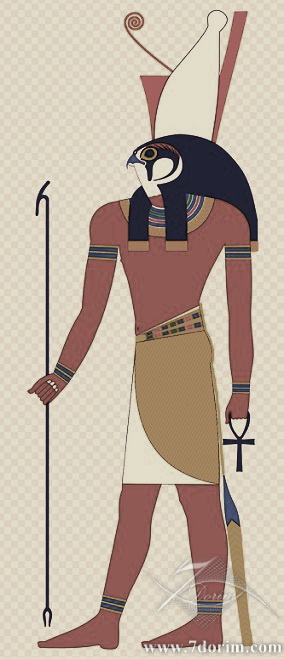
نماد چشم هوروس یا عقاب ایزدی از باورهای مصر باستان
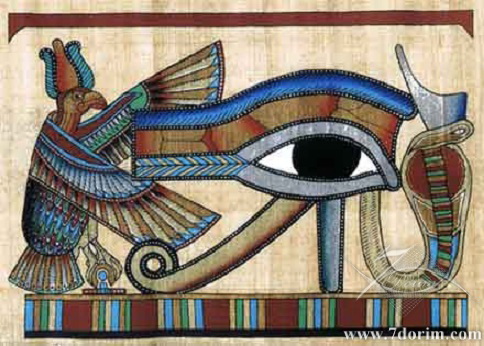
چشم هوروس یا چشم شیطان نمادی مهم متعلق به فراعنه مصر باستان
